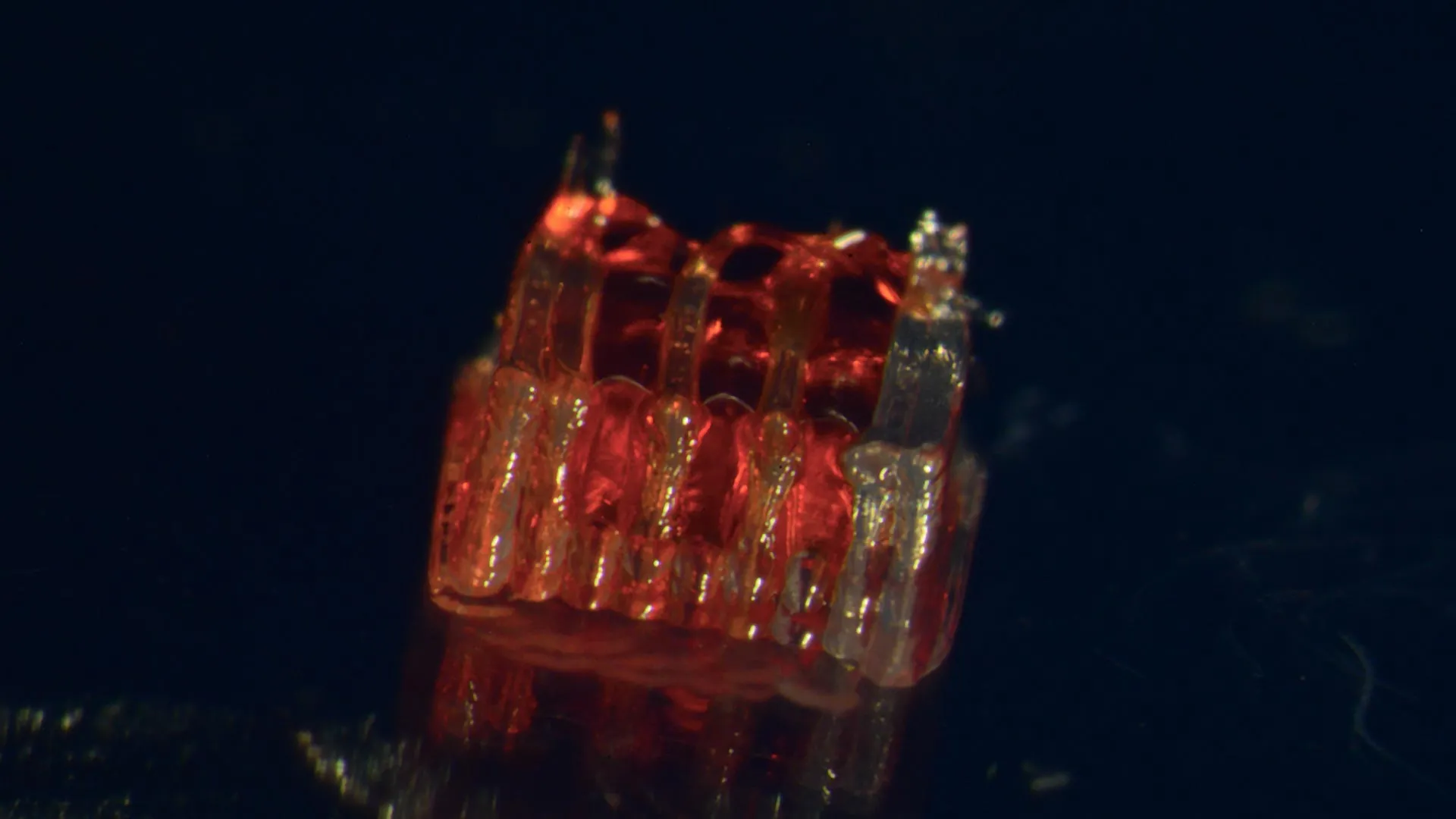Rats walk again after breakthrough spinal cord repair with 3D printing
Scientists have pioneered a new way to help repair spinal cord injuries by combining 3D printing, stem cell technology, and lab-grown tissues.
- Date:
- August 26, 2025
- Source:
- University of Minnesota
- Summary:
- University of Minnesota researchers developed a 3D-printed scaffold that directs stem cells to grow into functioning nerve cells, successfully restoring movement in rats with severed spinal cords. This promising technique could transform future treatment for spinal cord injuries.
- Share:

For the first time, a research team at the University of Minnesota Twin Cities demonstrated a groundbreaking process that combines 3D printing, stem cell biology, and lab-grown tissues for spinal cord injury recovery.
The study was recently published in Advanced Healthcare Materials, a peer-reviewed scientific journal.
According to the National Spinal Cord Injury Statistical Center, more than 300,000 people in the United States suffer from spinal cord injuries, yet there is no way to completely reverse the damage and paralysis from the injury. A major challenge is the death of nerve cells and the inability for nerve fibers to regrow across the injury site. This new research tackles this problem head-on.
The method involves creating a unique 3D-printed framework for lab-grown organs, called an organoid scaffold, with microscopic channels. These channels are then populated with regionally specific spinal neural progenitor cells (sNPCs), which are cells derived from human adult stem cells that have the capacity to divide and differentiate into specific types of mature cells.
"We use the 3D printed channels of the scaffold to direct the growth of the stem cells, which ensures the new nerve fibers grow in the desired way," said Guebum Han, a former University of Minnesota mechanical engineering postdoctoral researcher and first author on the paper who currently works at Intel Corporation. "This method creates a relay system that when placed in the spinal cord bypasses the damaged area."
In their study, the researchers transplanted these scaffolds into rats with spinal cords that were completely severed. The cells successfully differentiated into neurons and extended their nerve fibers in both directions -- rostral (toward the head) and caudal (toward the tail) -- to form new connections with the host's existing nerve circuits.
The new nerve cells integrated seamlessly into the host spinal cord tissue over time, leading to significant functional recovery in the rats.
"Regenerative medicine has brought about a new era in spinal cord injury research," said Ann Parr, professor of neurosurgery at the University of Minnesota. "Our laboratory is excited to explore the future potential of our 'mini spinal cords' for clinical translation."
While the research is in its beginning stages, it offers a new avenue of hope for those with spinal cord injuries. The team hopes to scale up production and continue developing this combination of technologies for future clinical applications.
In addition to Han and Parr, the team included Hyunjun Kim and Michael McAlpine from the University of Minnesota Department of Mechanical Engineering; Nicolas S. Lavoie, Nandadevi Patil and Olivia G. Korenfeld from the University of Minnesota Department of Neurosurgery; Manuel Esguerra from the University of Minnesota Department of Neuroscience; and Daeha Joung from the Department of Physics at Virginia Commonwealth University.
This work was funded by the National Institutes of Health, the State of Minnesota Spinal Cord Injury and Traumatic Brain Injury Research Grant Program and the Spinal Cord Society.
Read the full paper entitled, "3D-Printed Scaffolds Promote Enhanced Spinal Organoid Formation for Use in Spinal Cord Injury" on the Advanced Healthcare Materials website.
Story Source:
Materials provided by University of Minnesota. Note: Content may be edited for style and length.
Journal Reference:
- Guebum Han, Nicolas S. Lavoie, Nandadevi Patil, Olivia G. Korenfeld, Hyunjun Kim, Manuel Esguerra, Daeha Joung, Michael C. McAlpine, Ann M. Parr. 3D‐Printed Scaffolds Promote Enhanced Spinal Organoid Formation for Use in Spinal Cord Injury. Advanced Healthcare Materials, 2025; DOI: 10.1002/adhm.202404817
Cite This Page: